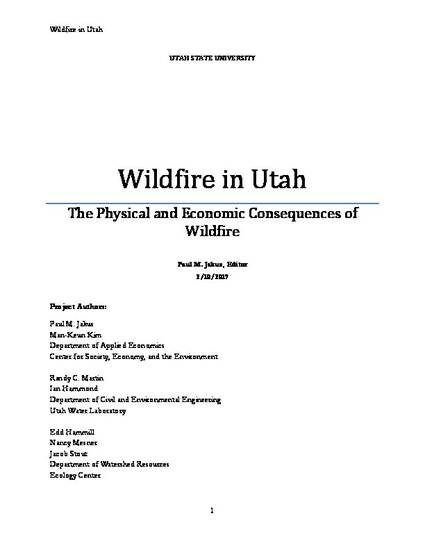
Article
Wildfire in Utah: The Physical and Economic Consequences of Wildfire
Watershed Sciences Faculty Publications
Document Type
Report
Editor
Paul M. Jakus
Publisher
Utah State University
Location
Logan, UT
Publication Date
2-10-2017
Keywords
- wildfire,
- utah,
- physical,
- economic,
- consequences
Disciplines
Abstract
PRELUDE
On June 26, 2012 a lightning strike ignited a wildfire in the Manti-La Sal National Forest of central Utah’s Carbon and Emery counties (Figure P.1). By the time the Seeley wildfire was contained three weeks later, some 48,000 acres of federal, state, and private land had been burned and $8.7 million in suppression costs expended (Styler 2012). According to the Monitoring Trends in Burn Severity (MTBS.gov) project, nearly one-third of the acreage was severely burned, damaging vegetation and soils for years to come. Severe burns vastly increase the erosion potential of burnt landscapes, and the steep lands of Huntington Canyon proved to be no exception.
Citation Information
Paul Mark Jakus, Man-Keun Kim, Randy S. Martin, Ian Hammond, et al.. "Wildfire in Utah: The Physical and Economic Consequences of Wildfire" (2017) p. 1 - 200 Available at: http://works.bepress.com/randy-martin/62/
